The moment you walk into a store or open a shopping app, you step onto a battlefield designed by psychologists and marketing experts.
Every scent, sound, and price tag is a weapon aimed directly at your subconscious, engineered to bypass your logic and open your wallet. You believe you’re in control of your spending, but your decisions are being skillfully manipulated long before you reach the checkout.
That feeling of buyer’s remorse or a budget blown apart isn’t just a lack of willpower; it’s the intended result of a sophisticated psychological playbook.
This guide exposes that playbook. It’s time to stop being a target and start understanding the invisible architecture of persuasion so you can finally take back financial control.
Trick 1: The Gruen Effect – Engineering Confusion to Maximize Exposure

The Tactic
The Gruen Effect, or Gruen Transfer, is the intentional design of a store’s layout to be confusing and maze-like. This sensory overload disorients shoppers, causing them to lose track of their original mission and begin to wander aimlessly, making them highly susceptible to impulse buys.
The Psychology
Named after Austrian architect Victor Gruen, the pioneer of the American shopping mall, this effect leverages a deliberately confusing layout to trigger a state where conscious, goal-directed behavior (e.g., “I’m here for milk”) is replaced by a more aimless, receptive browsing state.
Gruen himself argued that the more time shoppers spend in a store, the more they will spend.
While his original vision was to create community-centric “third places,” retailers quickly adopted the disorientation aspect to maximize profit.
The 2025 Playbook
In-Store:
This tactic is foundational to big-box retail. Supermarkets famously place essential staples like milk, eggs, and bread at the far back corners of the store, forcing customers to navigate the entire space and pass thousands of other tempting products to get what they need.
Department stores use winding paths, segmented sections, and no clear line of sight to the exits.
The master of this technique is IKEA, whose mandatory, one-way labyrinthine layout is a perfect execution of the Gruen Effect, ensuring you see every single product category before you can check out.
Online:
The digital equivalent is the “infinite scroll” on shopping apps and social media feeds, a feature explicitly designed to keep you browsing endlessly without a clear stopping point.
Another example is the complex navigation of large e-commerce sites, where finding a specific item often requires clicking through multiple categories and sub-categories, each page exposing you to more products, banners, and “featured recommendations”.
The Proof
While direct sales lift statistics for the Gruen Effect are difficult to isolate from other factors, its principles are so fundamental to retail design that they are considered best practice.
Biographer M. Jeffrey Hardwick summarized Gruen’s core conclusion: “an excellent store design would increase profits” by dazzling shoppers into a state of unconscious, continuous shopping.
The entire business model of large-format retail and shopping malls is predicated on this principle of maximizing exposure through environmental design.
Consumer Defense: The Mission Mindset
Before entering a store or opening an app, define your mission with an ironclad shopping list and commit to it.
For physical stores, visualize the store layout and plan the most efficient path to get only what you need, then get out. For online shopping, bypass the tempting homepage and category pages by using the search bar directly to find your item.
To combat the infinite scroll, set a timer on your phone for 5 or 10 minutes of browsing and stick to it.
Trick 2: Sensory Architecture – How Scents, Sounds, and Lighting Bypass Logic
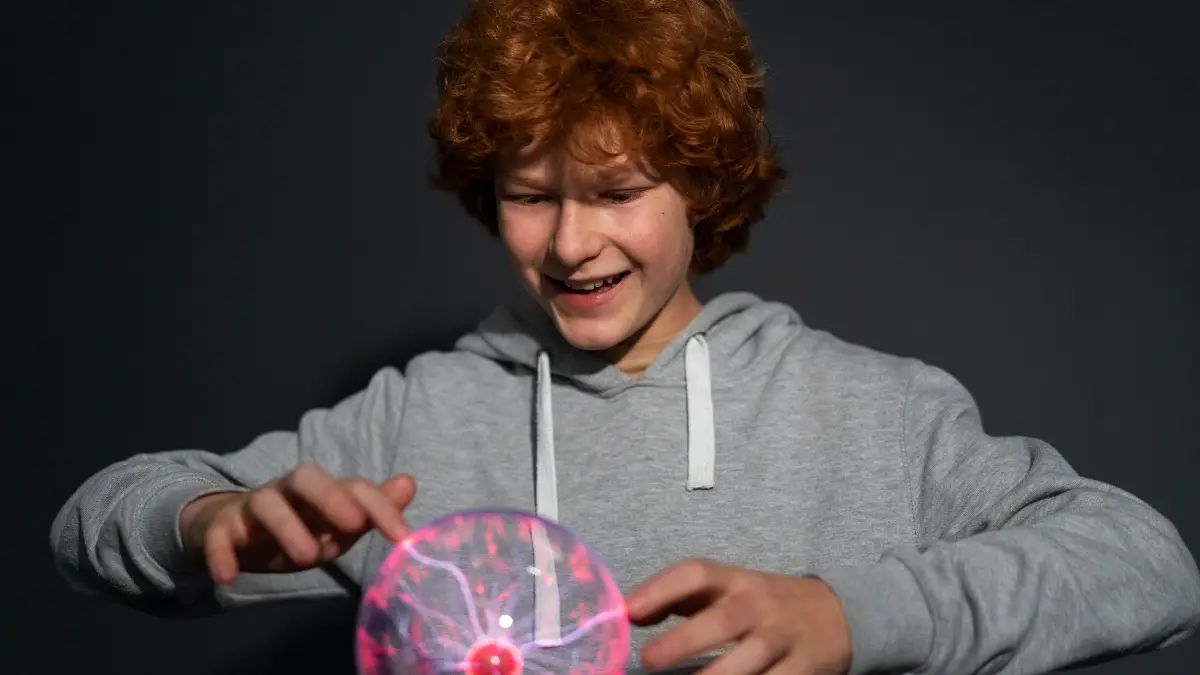
The Tactic
Sensory marketing is the strategic use of ambient cues—music, scents, lighting, colors, and even temperature—to create a specific mood that encourages lingering, lowers price sensitivity, and increases spending.
The Psychology
Our senses provide a direct pathway to the emotional and memory centers of our brain, often bypassing the rational, analytical prefrontal cortex.
Pleasant scents and slow-tempo music can reduce cognitive strain, create feelings of comfort and nostalgia, and make time seem to pass more quickly—all of which are correlated with higher spending.
Smell is a particularly potent tool, as research indicates that 75% of our emotions are triggered by what we smell.
Colors are also weapons of subtle influence; red, for instance, stimulates excitement and is often used for clearance signs, while blue generates a sense of trust and security.
The 2025 Playbook
In-Store:
The smell of baking bread or roasting chickens near a supermarket’s entrance is a classic tactic designed to make you hungry, and studies confirm that hungry shoppers spend more.
Fashion retailers diffuse signature scents (like vanilla, citrus, or sandalwood) and play curated, slow-tempo indie pop or jazz music to create a relaxed, upscale, and happy atmosphere where shoppers feel comfortable lingering.
Clothing stores often use soft, warm, and flattering lighting in dressing rooms to make the clothes—and by extension, the shopper—look more appealing.
Online:
While scent is not yet a mainstream online tool, the digital world has its own sensory arsenal.
High-quality, aspirational video content, satisfying “click” sounds when adding an item to a cart, and ambient background audio on luxury brand websites are all forms of digital sensory marketing designed to create a premium, immersive, and emotionally resonant experience.
The Proof
The data on sensory marketing is compelling. Multisensory experiences can increase sales by 10% and extend the time shoppers spend in a store by nearly 6 minutes.
A study from the University of Bath found that playing pleasant music can increase spending by over 10% on weekdays. Another study showed that slow in-store music can increase sales by up to 38% by encouraging a more leisurely shopping pace.
2025 survey revealed that 26% of shoppers admitted that holiday ambiance encouraged them to spend more, a figure that doubled from just 12% in 2024. Overall, 84% of U.S. shoppers confirm that sensory in-store experiences influence their purchase decisions.
Consumer Defense: Sensory Isolation and Awareness
The first step is conscious awareness: recognize that the store’s atmosphere is an engineered sales tool.
A powerful active defense is to wear headphones and listen to your own fast-paced music or an engaging podcast. This overrides the store’s carefully curated soundtrack and can help you maintain a more focused, mission-oriented pace.
When you notice an appealing smell, pause and ask yourself, “Is this scent making me want something I don’t actually need?” Chewing gum can also help detract from and neutralize engineered food scents.
Trick 3: Strategic Product Placement – The Science of the Shelf

The Tactic
This involves the intentional positioning of products in specific, high-visibility locations—such as at eye level on shelves, on end-of-aisle displays (end caps), and at the checkout counter—to maximize exposure and trigger impulse purchases.
The Psychology
This tactic leverages two key psychological principles: cognitive ease and decision fatigue.
The retail maxim “eye level is buy level” is based on the fact that we are most likely to purchase items that are easy to see and grab, as it requires the least physical and mental effort.
Retailers place their most profitable, high-margin national brands in this “bull’s-eye zone,” while cheaper store brands and niche products are often relegated to the harder-to-reach top and bottom shelves.
By the time a shopper reaches the checkout line, their willpower is often depleted from the dozens of other decisions made throughout the store.
This state of decision fatigue makes them highly susceptible to the low-cost, high-reward “impulse buys” (candy, magazines, sodas, small gadgets) that are conveniently placed there for easy grabbing.
The 2025 Playbook
In-Store:
A classic example is placing sugary cereals with cartoon characters at a child’s eye level to provoke “pester power”.
Retailers use end-cap displays for promotions, knowing that shoppers automatically perceive items placed there as being on sale, even when they are not.
Another powerful technique is cross-merchandising, where complementary items are placed together—like tortilla chips and salsa next to the beer aisle, or ice cream scoops in the freezer section—to increase the overall basket size.
Online:
The digital checkout page is the new impulse aisle. This is where you are bombarded with “People also bought…” or “Frequently bought together” suggestions, which are highly effective forms of digital cross-selling.
“Add to cart” pop-ups that suggest relevant accessories (e.g., “Don’t forget the batteries!”) serve the same purpose.
The Proof
The impact of placement is well-documented. Placing products at eye-level can boost sales by up to 23%. Similarly, end caps and other high-traffic promotional displays can increase sales of an item by up to 23%.
Research by HubSpot found that effective upselling and cross-selling strategies can be responsible for driving up to 30% of a company’s revenue.
Consumer Defense: Look High, Look Low, and Stick to the List
Make it a habit to consciously scan the entire shelf—from top to bottom. The best values are often hidden on the lowest shelf.
When you reach the checkout line, whether physical or digital, enforce a strict rule: never add anything to your cart that wasn’t on your original list.
This requires pre-commitment and discipline, but it is the single most effective way to combat impulse buys fueled by decision fatigue.
Trick 4: Price Anchoring – The Art of Making an Expensive Item Seem Reasonable
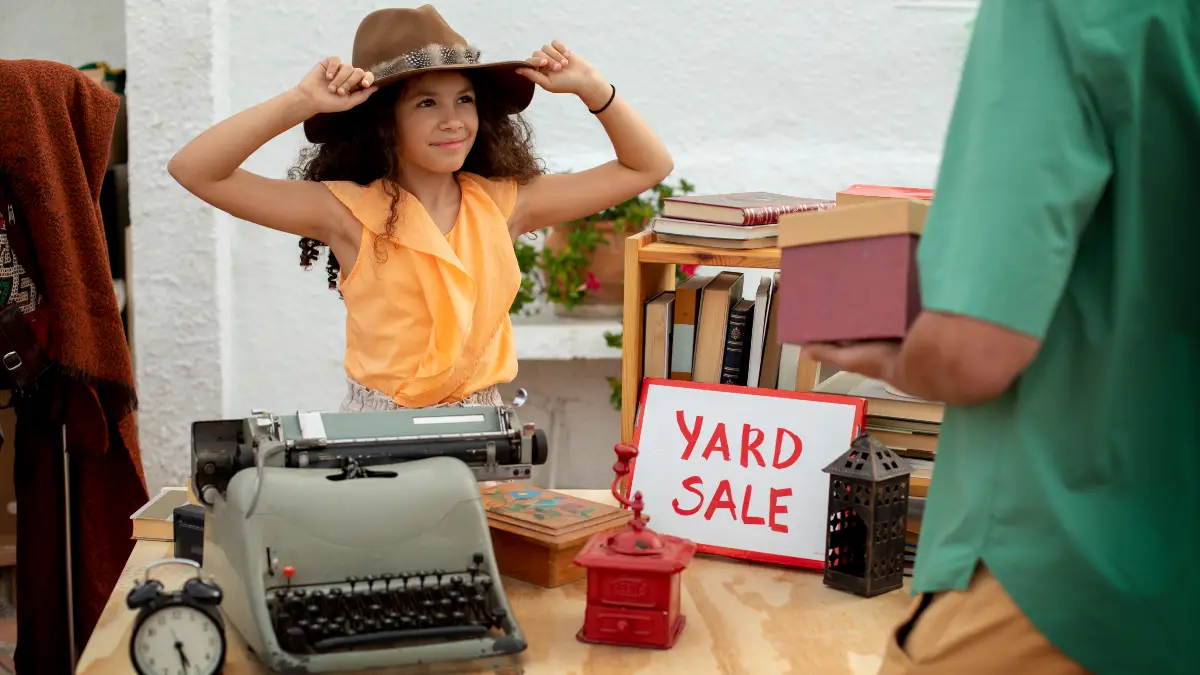
The Tactic
Price anchoring is the practice of establishing a high “anchor” price as the first piece of information a consumer sees.
This initial, high number then serves as a reference point, making all subsequent, lower prices seem like a good deal in comparison.
The Psychology
This tactic directly leverages the anchoring bias, a powerful cognitive shortcut where our brains rely heavily on the first piece of information offered when making decisions.
A $300 sweater might seem expensive in isolation, but when it’s placed next to a nearly identical $1,200 sweater, it suddenly appears reasonable.
The initial high price “anchors” our perception of what is expensive in that category, making the target price feel like a relative bargain, even if it’s objectively overpriced.
The 2025 Playbook
In-Store:
A restaurant menu that lists a $250 bottle of wine at the very top, not because the restaurant expects to sell many, but to make the $60 bottles seem affordable.
Car dealership that first shows you the fully-loaded, top-of-the-line model to anchor your expectations high before showing you the mid-range model they actually want you to buy.
Online:
This is ubiquitous in the digital world. Subscription services often display their most expensive “Enterprise” or “Premium” plan first or most prominently to make the “Standard” plan look like a steal.
E-commerce sites constantly use strikethrough pricing, displaying a high, crossed-out “List Price” or “MSRP” next to the current “Sale Price” to anchor the perception of a significant discount.
The Proof
Price anchoring is a foundational principle of behavioral economics, first demonstrated in seminal studies by psychologists Amos Tversky and Daniel Kahneman.
While specific conversion lift statistics vary by implementation, its effectiveness is widely documented in both academic research and marketing practices.
It is a key tactic for guiding consumers toward profitable mid-tier options and increasing the perceived value of an offer without changing the product itself.
Consumer Defense: Ignore the Anchor and Do Your Own Research
Actively train yourself to disregard the “original,” “list,” or highest-tier price. Assume it is an artificial construct designed to manipulate you.
Before making any significant purchase, conduct a quick search on your phone for the typical market price of that item or product category. This allows you to create your own anchor based on reality, not the one the retailer provides for you.
Trick 5: The Decoy Effect – The “Useless” Option That Makes You Choose the More Expensive One
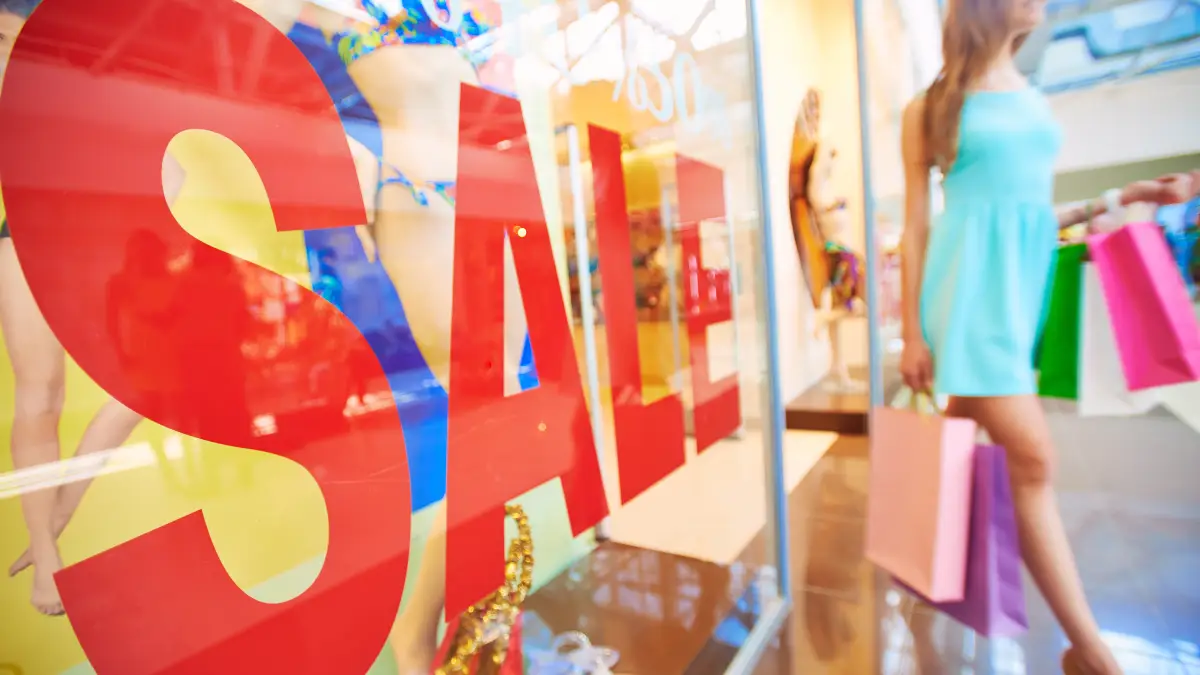
The Tactic
The decoy effect involves introducing a third, asymmetrically dominated price option (the decoy) for the sole purpose of making a more expensive option (the target) look like a much better deal in comparison to the cheapest option (the competitor).
The Psychology
Also known as the “asymmetric dominance effect,” this tactic works by simplifying our brain’s comparison process.
When faced with two complex choices (e.g., price vs. features), our brain struggles to make a clear decision. But when a third option is introduced that is clearly worse value than one of the others, it makes that “dominating” option seem far more attractive and provides an easy justification for choosing it.
The decoy provides a simple rationale for what would otherwise be a difficult choice.
The Proof
In Dan Ariely’s study on The Economist’s pricing, the results were dramatic. When only two options (Web-only and Print + Web) were presented, 68% of students chose the cheaper $59 option.
However, when the “Print-only” decoy was added, a staggering 84% chose the most expensive $125 Print + Web bundle, representing a massive increase in revenue for the publisher from the exact same customer base.
Consumer Defense: Evaluate Options Based on Need, Not Relative Value
Consciously ignore the decoy option and evaluate the remaining two choices based on what you actually need. Ask yourself: “Do I really need the large soda, or is the small sufficient?” or “Will I actually find time to read the print version of the magazine, or is the web version all I need?”
This forces your brain to return to assessing absolute value and personal utility, rather than falling for the manipulated relative value presented by the retailer.
Trick 6: Charm Pricing – The Unrelenting Power of the Number 9

The Tactic
Charm pricing is the ubiquitous practice of ending prices in “.99,” “.95,” or simply the digit “9” to make them appear significantly cheaper than they actually are.
The Psychology
This tactic relies on a cognitive bias known as the “left-digit effect.” Because we read from left to right, our brain anchors on the first digit it sees and uses it to form an initial judgment of the price’s magnitude.
A price of $9.99 is processed as “$9 and some change,” feeling psychologically closer to $9 than to its actual value of $10. This simple trick implies a discount or a “deal” price. Counterintuitively, it can even make a product more desirable than if it were priced lower at a round number.
For example, one famous study showed that more women’s blouses were sold at $39 than at either $44 or the cheaper price of $34.
The 2025 Playbook
This tactic is so pervasive it’s almost invisible. It is used on nearly 90% of retail items, from a $4.99 app subscription to a $29.95 t-shirt to a $49,999 car.
Even premium brands like Apple use it, pricing a laptop at $999 instead of $1000 to maintain a perception of value.
The Proof
The data supporting charm pricing’s effectiveness is overwhelming. Multiple studies have shown that charm prices can increase sales by an average of 24% compared to nearby rounded prices.
A landmark 2003 experiment from MIT and The University of Chicago found that using charm pricing increased consumer demand for an item by 35%.
Consumer Defense: The Round-Up Rule
This is a simple but powerful mental habit to neutralize the trick. Whenever you see a price like $19.99 or $49.95, immediately and consciously round it up to the next whole dollar in your head ($20 or $50).
This small mental act eliminates the psychological illusion and forces you to evaluate the item based on its actual, non-manipulated cost.
Trick 7: The Illusion of a “Deal” – Unmasking Fake Sales and Inflated Reference Prices
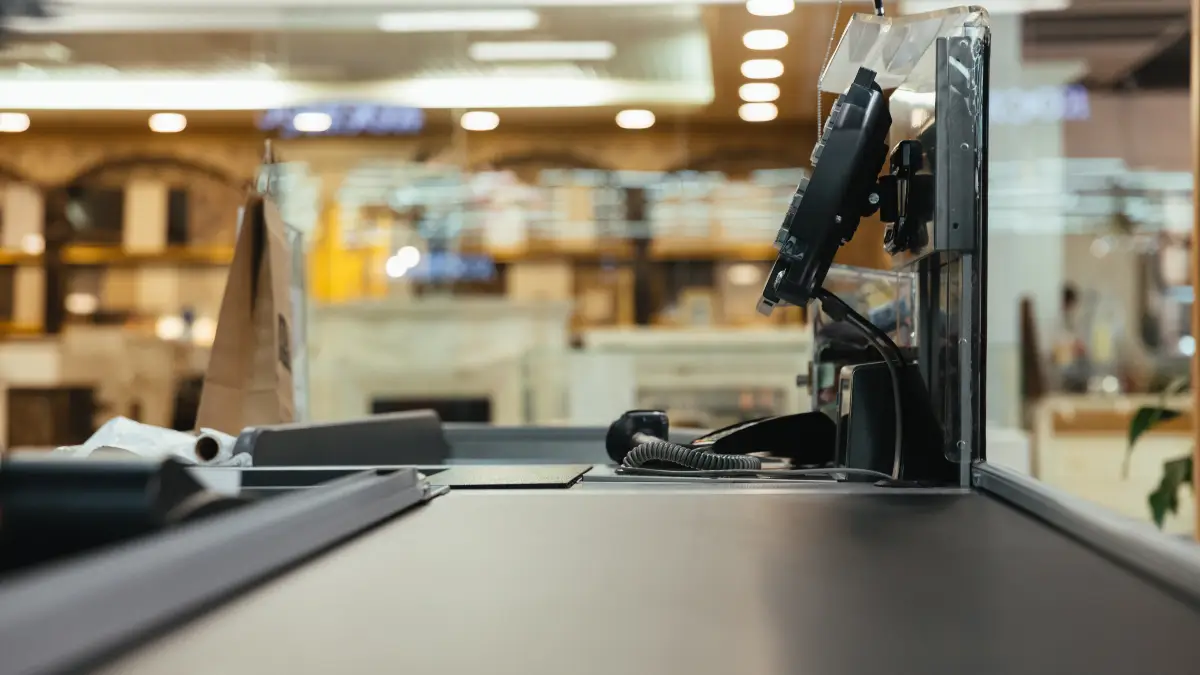
The Tactic
This involves creating a false sense of urgency and value by advertising a “sale” price against a “regular,” “list,” or “MSRP” price that is either artificially inflated or was never the actual price to begin with.
The Psychology
This tactic is a direct and often deceptive combination of price anchoring and loss aversion. The inflated “was” price acts as a powerful anchor, making the “now” price seem like a significant bargain.
The “limited-time” nature of the supposed sale then triggers loss aversion—the fear of losing the opportunity to get this great deal if you don’t act immediately.
The 2025 Playbook
“Constant Sales”:
Many large retailers, particularly in furniture and apparel, have items that are perpetually “on sale.” The “regular price” shown on the tag is a fiction that customers rarely, if ever, pay.
The sale price is the actual everyday price, but its presentation creates a constant, fake sense of urgency.
Misleading Reference Pricing:
This is rampant online. A product might show “MSRP: $299” crossed out, with “Our Price: $199.” However, a quick search reveals that no reputable retailer has ever sold the item for $299, making the “savings” entirely illusory.
BOGO (Buy-One-Get-One-Free):
While sometimes a genuine deal, this tactic often encourages buying two of something when you only needed one.
In other cases, the price of the first item is simply inflated to cover the cost of the “free” one, meaning you’re effectively just getting a 50% discount on two items you may not have needed.
The Proof
A multi-week investigation by the nonprofit Consumers’ Checkbook, which tracked prices at 24 major retailers, found that “sale” prices were often bogus.
At 21 of the stores, items were offered at their “discounted” price more than half the time, meaning the “sale” was the normal price. Consumer skepticism is growing; studies show that over 60% of online shoppers now check multiple websites before making a purchase, in part to verify if a deal is real.
Consumer Defense: Be a Price Historian
Never take a “sale” at face value. Use browser extensions or websites like CamelCamelCamel (for Amazon) or Honey to view an item’s price history.
These tools will quickly reveal if the current “sale” is actually a good deal, a return to its normal price, or even more expensive than it was a few weeks ago.
For BOGO deals, ask yourself this simple question: “If a single one of these was on sale for half the current price, would I buy it?” If the answer is no, then the BOGO deal is not a good value for you.
Trick 8: Social Proof – Weaponizing “Bestsellers” and 5-Star Reviews
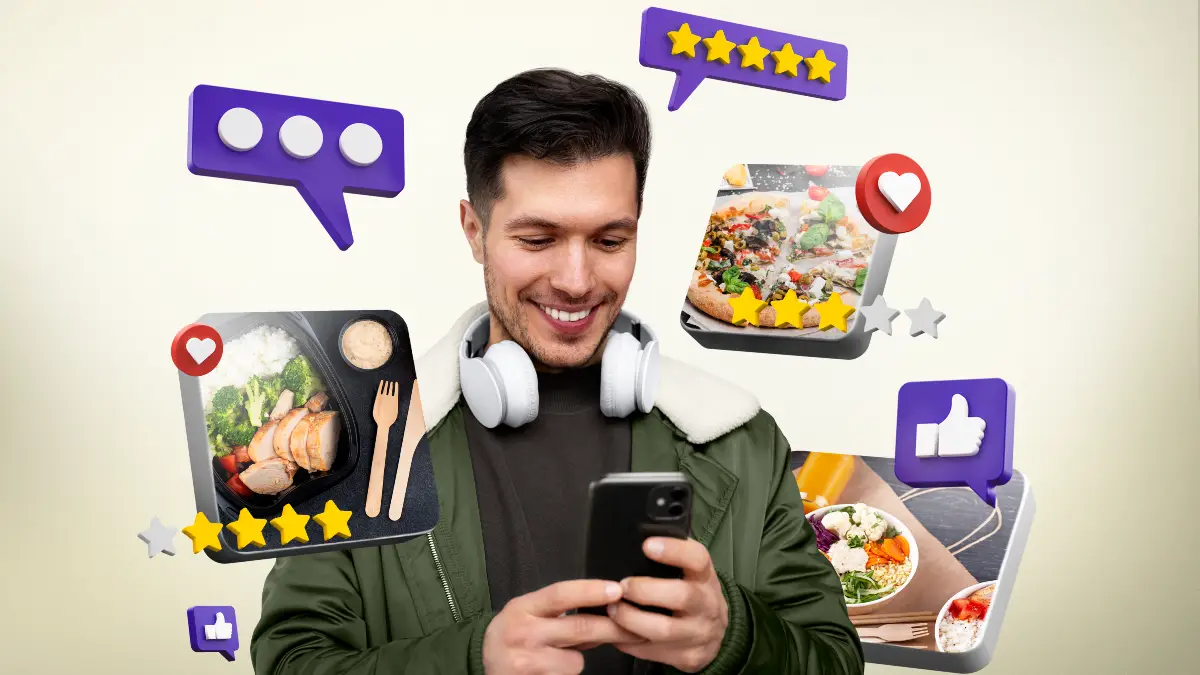
The Tactic
Social proof is the use of the actions, opinions, and endorsements of others—whether they are customers, experts, or influencers—to create the impression that a product is popular, validated, and therefore a safe and desirable choice.
The Psychology
As social creatures, humans have a powerful, evolutionarily-ingrained instinct to conform. We use the behavior of others as a mental shortcut (a heuristic) to guide our own decisions, especially in situations of uncertainty.
The logic is simple: if thousands of people have already bought and liked a product, it must be good. This reduces our perceived risk and lowers the cognitive effort required to make a decision.
The 2025 Playbook
Online:
The digital realm is the ultimate amplifier of social proof. It manifests in countless forms: customer reviews and star ratings, “X people are viewing this item right now” notifications that create a sense of real-time demand.
Displays of user-generated content (customer photos on a product page), and massive influencer marketing campaigns where trusted personalities endorse products to their followers.
In-Store:
While more subtle, social proof is still potent in physical retail. Look for “Bestseller,” “Customer Favorite,” or “Most Popular” signs on product displays.
“Staff Picks” sections in bookstores or wine shops also serve this function, leveraging the authority of presumed experts.
The Proof
The statistics on the power of social proof are staggering. Research shows that 93% of consumers say online reviews directly impact their purchase decisions.
Displaying customer reviews on a product page can increase conversion rates by as much as 270%. Furthermore, websites that incorporate user-generated content, like customer photos, see a 29% higher web conversion rate on average.
The influence of individuals is also immense, with 61% of consumers reporting that they trust influencer endorsements more than they trust traditional advertising.
Consumer Defense: Separate Popularity from Personal Need
Actively question the social proof you encounter. Before being swayed by a 5-star rating, ask yourself, “Would I still want this product if it had no reviews at all?” or “Does this influencer’s lifestyle and needs actually align with my own?”
A powerful tactic is to seek out the 3-star and 4-star reviews; they often contain more balanced, nuanced, and realistic feedback than the polarized 5-star raves or 1-star rants.
Trick 9: Loss Aversion – The Powerful Fear of Missing Out

The Tactic
Loss aversion is the framing of an offer not as an opportunity to gain something, but as a situation where the consumer will suffer a loss if they fail to act.
The Psychology
This is one of the most powerful and well-documented biases identified by Nobel Prize-winning psychologists Daniel Kahneman and Amos Tversky.
Their research demonstrated that the psychological pain of losing something is approximately twice as powerful as the pleasure of gaining something of equal value.
Marketing messages that tap into this bias trigger a strong, fear-based emotional response, compelling us to act immediately to avoid the anticipated negative feeling of loss or regret.
The 2025 Playbook
Loss aversion is the psychological engine that powers nearly all scarcity and urgency tactics.
Urgency Messaging:
“Don’t miss out!”, “Offer ends tonight!”, or a countdown timer on your shopping cart that says “Your items are only reserved for 10:00” all frame inaction as a direct loss.
Loss Framing in Copywriting:
A classic example is a message like, “Stop losing $100 every year in energy by buying our smart thermostat!” This is proven to be more effective than the gain-framed alternative, “Save $100 a year…”.
Loyalty Programs:
Once you have accumulated a certain number of points or reached a specific status tier in a loyalty program, the fear of losing those benefits by shopping elsewhere can effectively lock you into a brand, even if a competitor offers better value.
The Proof
The foundational research by Kahneman and Tversky established the “twice as powerful” principle, which has been replicated in countless studies.
Marketers have operationalized this by framing promotions in terms of potential loss (“buy now or lose this price”) which consistently encourages higher purchase rates than gain-framed promotions (“buy now and save”).
Consumer Defense: Reframe the Narrative
When you encounter a “don’t lose out” message, take a moment to mentally rephrase it as a potential gain. “Limited time offer!” becomes “An opportunity to spend money I hadn’t planned to spend.”
“Your cart is about to expire!” becomes “A chance to reconsider if I truly need these items.”
This simple act of reframing shifts the decision from an emotional, fear-based reaction (avoiding a loss) to a conscious, rational choice (spending or saving), which engages your logical brain and defuses the tactic’s power.
Trick 10: The Reciprocity Trap – How “Free” Gifts Create an Obligation to Buy

The Tactic
Reciprocity is the practice of giving a potential customer a small, often unsolicited, gift or favor to create a subconscious social obligation for them to “return the favor,” typically by making a purchase.
The Psychology
The principle of reciprocity is a deeply ingrained social norm that governs human interaction. When someone does something for us, we feel a strong psychological need to do something for them in return to restore a sense of social balance and fairness.
A “free sample,” a “free gift with purchase,” or even personalized help from a sales associate is not just a product trial or good service; it’s the creation of a social debt that many people feel compelled to repay.
The 2025 Playbook
In-Store:
The most famous example is the free food samples offered at warehouse clubs like Costco and Sam’s Club. A beauty counter associate offering a “free” makeover or a generous sample of a new serum is another classic application.
Even a particularly helpful salesperson who spends 30 minutes with you can trigger this feeling of obligation.
Online:
A “free” e-book, checklist, or webinar offered in exchange for your email address is a form of reciprocity; you’ve been given value, and now you’re on their list for future requests (i.e., sales pitches).
A “free gift” that is added to your cart when you spend over a certain amount is another common tactic, which also combines with the Free Shipping Threshold trick.
A surprise discount code that appears in your cart can also feel like a personal gift that encourages you to complete the purchase.
The Proof
While hard statistics on sales lift from reciprocity can be nuanced and context-dependent, the principle is a cornerstone of sales and marketing strategy.
Case studies have shown that even small, unexpected, and personal gestures can dramatically increase compliance and spending.
One study found that surprise coupons given to customers as they entered a store led to them spending 11% more on average than customers who had received the coupons in advance.
Consumer Defense: Redefine the “Gift”
Mentally reframe the free item not as a personal gift, but as what it truly is: a calculated marketing expense for the company. You are not socially indebted to a corporation for its customer acquisition strategy.
It is perfectly acceptable and normal to take the free sample, accept the help, or download the e-book and then say, “Thank you,” without buying anything. You have absolutely no obligation to reciprocate a business tactic.
Trick 11: The Free Shipping Threshold – How You Spend More to “Save” Money
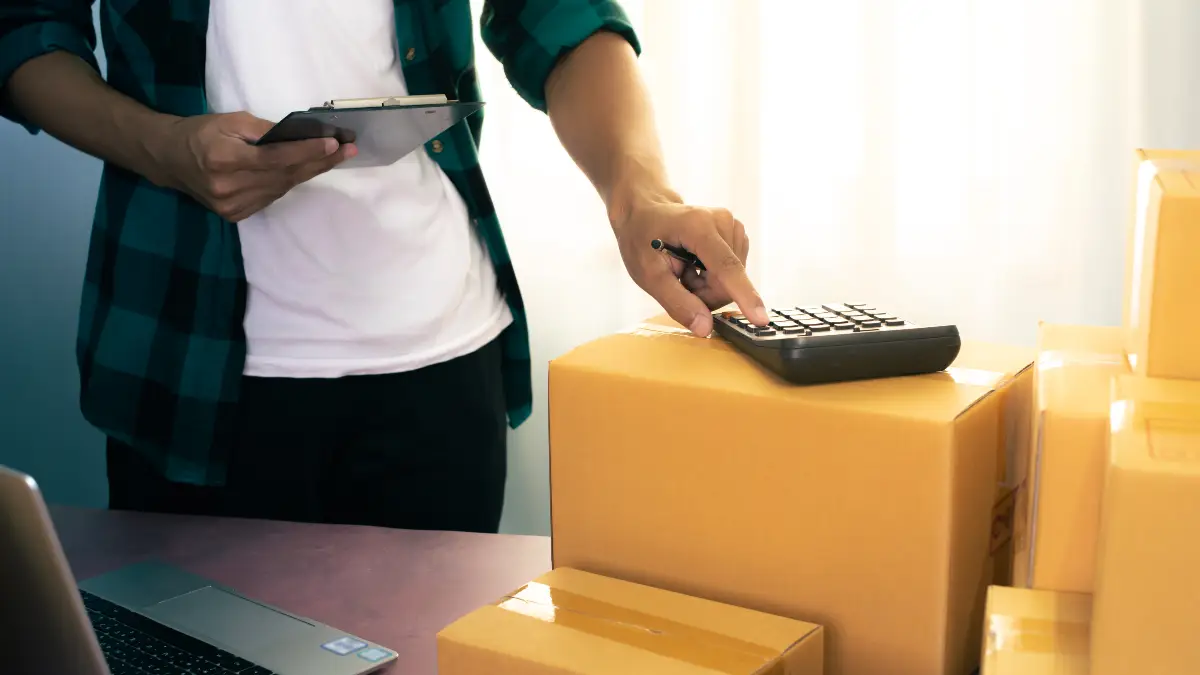
The Tactic
This is the practice of offering free shipping on orders that meet a minimum dollar amount, a strategy designed to encourage customers to add more items to their cart to qualify for the “deal”.
The Psychology
This tactic masterfully combines two powerful psychological principles: loss aversion and the irrational power of the word “free.”
Shipping fees are perceived by consumers as a “pain point” or a pure loss—money spent for no tangible product. Research shows that consumers would rather spend more money on an additional product (a perceived gain) than “waste” money on shipping (a perceived loss).
The word “FREE” itself is an incredibly powerful emotional trigger that can cause people to behave irrationally, choosing a “free” option even when another option is a better value.
The 2025 Playbook
This is a standard and highly effective feature of almost every e-commerce store. It is often amplified by a dynamic progress bar or notification directly in the shopping cart that says, “You’re only $X away from free shipping!” This gamifies the process and makes the upsell explicit and hard to ignore.
Brands will often strategically set their threshold just above their average order value to maximize the number of customers who are nudged to add one more item.
The Proof
This is a proven and measurable average order value (AOV) booster. One survey found that 58% of shoppers admit to having added more items to their cart just to qualify for free shipping.
In a compelling A/B test conducted by Convertica, simply showing customers how close they were to the free shipping threshold led to an 88.3% increase in completed orders and a massive 175.4% boost in revenue per visitor.
A common industry best practice is for retailers to set their free shipping threshold 20-30% above their current AOV to maximize its effectiveness.
Consumer Defense: Do the Math
This trick is easily defeated with simple arithmetic. Before you add another item to your cart just to meet the threshold, calculate the difference.
If shipping costs $7 and you need to spend another $15 on a product to get free shipping, you are not “saving” $7; you are spending an extra $8. Unless the item you are adding is something you genuinely needed anyway, it is almost always cheaper to just pay for the shipping.
Trick 12: Digital Dark Patterns – Deceptive Designs That Trick You Into Clicking
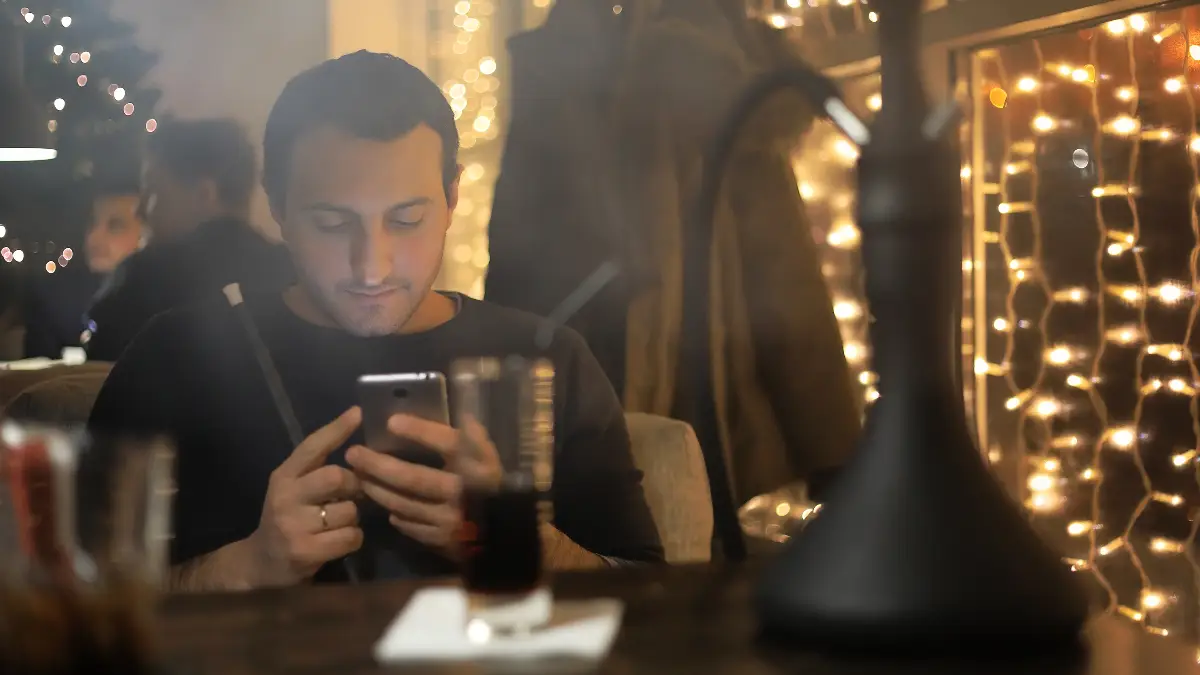
The Tactic
Dark patterns are elements of user interface (UI) and user experience (UX) design that are intentionally crafted to trick users into doing things they might not want to do, such as signing up for a recurring subscription, sharing more personal data than necessary, or making an unintended purchase.
The Psychology
These deceptive designs exploit our tendency to scan web pages quickly rather than read them carefully.
They use visual tricks, confusing language, and cognitive biases to guide us toward the action the business wants us to take, often making the desired action easy and the undesired action difficult or confusing.
The 2025 Playbook
Confirm shaming:
This involves guiding users to opt-in to something by making the opt-out option sound shameful or foolish. For example, the ‘accept’ button might say “Yes, I want to save 20%!” while the ‘decline’ link is a small line of text that says “No thanks, I enjoy paying full price”.
Roach Motel:
This pattern makes it very easy to get into a situation (like signing up for a subscription) but incredibly difficult and confusing to get out of it, often hiding the cancellation option deep within account settings.
Hidden Costs / Drip Pricing:
This is the practice of revealing additional fees (like service fees, taxes, or mandatory “resort fees” on travel sites) only at the very end of the checkout process, after you have already invested significant time and effort into the purchase.
The Proof
The use of dark patterns is widespread, though companies do not advertise their effectiveness.
The fact that regulatory bodies like the Federal Trade Commission (FTC) in the US and the Competition and Markets Authority (CMA) in the UK are actively investigating and cracking down on these practices is a clear indicator of their prevalence and negative impact on consumers.
Consumer Defense: Slow Down and Read Everything
The primary defense against dark patterns is to break the habit of clicking through online processes on autopilot.
Before completing any checkout or signing up for any service, slow down and read every line item carefully. Look for pre-checked boxes that opt you into marketing emails or recurring charges.
Read the text on the buttons themselves, not just their placement. If the process to unsubscribe or cancel a service is not clearly and simply stated upfront, consider it a major red flag and a reason to avoid the service altogether.
Trick 13: The Endowment Effect – The Power of “Trying Before You Buy”

The Tactic
This tactic involves encouraging a feeling of psychological ownership over a product before a purchase is officially made.
This makes the consumer value the item more highly and feel a sense of loss if they have to give it up, increasing the likelihood of purchase.
The Psychology
The endowment effect is the well-documented principle that we place a higher value on things we own (or feel we own) compared to identical items we do not own.
Once we feel a sense of possession over something, giving it up feels like a loss. As established by the principle of loss aversion, this feeling of potential loss is a far more powerful motivator than the prospect of a simple gain.
The 2025 Playbook
Free Trials:
This is the quintessential endowment effect tactic in the digital age. Once you have integrated a software, streaming service, or app into your daily life for 30 days, canceling it and “losing” all your customized settings, playlists, or watch history feels painful.
This makes you far more likely to convert to a paying subscriber.
“Try Before You Buy” Programs:
Online clothing retailers like Stitch Fix or Amazon Prime Wardrobe that send you a box of clothes to try on at home are masters of this.
Once the items are physically in your closet, integrated with your other clothes, the act of packing them up and sending them back feels like a tangible loss.
Interactive Product Customization:
Allowing customers to digitally design their own sneakers, configure their own car, or customize a piece of furniture creates a deep sense of personal investment and ownership long before the purchase is made.
This also taps into the related IKEA Effect, a bias where we place a disproportionately high value on products we have partially created ourselves.
The Proof
The endowment effect is a robust and well-documented bias. Classic experiments consistently show that sellers value an item they own (like a coffee mug) at more than twice the price that potential buyers are willing to pay for the exact same item.
The entire business model of the subscription economy is heavily reliant on the effectiveness of free trials, which are built on this very principle.
Consumer Defense: Create a Psychological Barrier
You must actively remind yourself that you do not own the item yet. For free trials, set a calendar reminder for two days before the trial ends with the note: “Make a conscious, unemotional decision about the value of this service.”
For “try at home” programs, immediately place any items you are not 100% sure about back into the shipping box.
This prevents them from feeling like part of your wardrobe and maintains the psychological distance needed to make a rational decision. Remind yourself: “I do not own this yet. I am simply evaluating it.”
The Retailer’s Playbook: A Shopper’s Defense Cheat Sheet
| The Trick (and its Psychological Name) | What It Exploits | Your 10-Second Defense |
| Engineering Confusion (The Gruen Effect) | Our tendency to get disoriented and abandon goals when overwhelmed. | Make a list and plan your route. Use the search bar online. Set a timer. |
| Atmospheric Manipulation (Sensory Architecture) | Our senses’ direct line to the emotional, non-rational parts of our brain. | Wear headphones with your own music. Be aware that pleasant smells are a sales tool. |
| The Science of the Shelf (Strategic Product Placement) | Our preference for what’s easy (eye-level) and our fatigue at checkout. | Look at the top and bottom shelves for better value. Never add items at the checkout. |
| Making Expensive Seem Cheap (Price Anchoring) | Our reliance on the first number we see to judge all other prices. | Ignore the “was” price. Ask: “What is this item actually worth to me?” |
| The “Useless” Option (The Decoy Effect) | Our brain’s desire for an easy justification when comparing complex options. | Ignore the decoy. Compare the other options based only on what you truly need. |
| The Power of.99 (Charm Pricing) | Our brain’s tendency to focus on the left-most digit, making $9.99 feel like $9. | Immediately round every price up to the next whole dollar in your head. |
| The Fake “Sale” (The Illusion of a Deal) | Our fear of missing out on a bargain, even if the bargain isn’t real. | Use a price-tracking tool to check the item’s price history. Never trust a “sale.” |
| The Wisdom of the Crowd (Social Proof) | Our instinct to follow the herd and assume popularity equals quality. | Separate popularity from personal need. Read the 3-star reviews for balanced feedback. |
| The Fear of Missing Out (Loss Aversion) | The fact that the pain of losing is twice as powerful as the pleasure of gaining. | Reframe the message. “Don’t miss out!” becomes “An opportunity to spend money.” |
| The “Free” Gift Trap (Reciprocity) | Our deep-seated social obligation to return a favor. | Redefine the “gift” as a “marketing expense.” You owe the company nothing. |
| Spending More to “Save” (Free Shipping Threshold) | Our hatred of “wasting” money on shipping fees. | Do the math. If shipping is $7, don’t spend an extra $15 on a product to avoid it. |
| Deceptive Design (Digital Dark Patterns) | Our tendency to scan quickly and click on autopilot. | Slow down. Read everything before you click, especially at checkout. |
| The “Try Before You Buy” Trap (The Endowment Effect) | Our tendency to overvalue things once we feel like we own them. | Remind yourself: “I do not own this yet.” For trials, set a calendar alert to cancel. |

